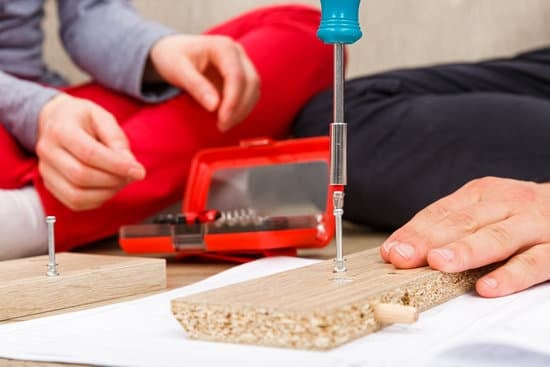When embarking on home improvement projects, many homeowners wonder if they can benefit from tax deductions. This article aims to provide a comprehensive understanding of the tax deductibility of home improvement loans. In this introductory section, we will explore what home improvement loans are and their purpose, as well as provide an overview of tax deductions and how they can benefit homeowners.
Home improvement loans are financial tools that enable homeowners to fund renovations and repairs to their properties. These loans serve the purpose of not only improving the aesthetics and functionality of the home but also increasing its value. However, one crucial aspect that homeowners often consider is whether these loans come with any tax benefits.
Tax deductions can offer significant financial relief for homeowners undertaking home improvement projects. By deducting eligible expenses from their taxable income, homeowners can potentially reduce their overall tax liability. Yet, understanding which expenses qualify for tax deductions and how to claim them can be complex.
Throughout this article, we will discuss whether the specific purpose of a home improvement loan affects its tax deductibility. We will also delve into different categories of deductible expenses, such as interest payments, energy-efficient upgrades, and essential repairs. Additionally, we will examine any limitations or restrictions placed on these deductions by tax authorities and various government incentives that may be available.
By gaining a deeper understanding of the intricacies surrounding home improvement loan tax deductions, homeowners can make more informed decisions about financing their projects while maximizing potential savings. Remember to consult with professionals for personalized advice tailored to your unique circumstances.
Does the Purpose of the Loan Matter for Tax Deductibility?
When it comes to home improvement loans, one common question that homeowners have is whether the purpose of the loan affects its tax deductibility. In other words, can you still claim a tax deduction if you use the loan for purposes other than home improvements? The answer is that it depends on how the loan is used and what expenses are being deducted.
In general, the purpose of the loan does matter when it comes to tax deductibility. The IRS allows deductions for certain qualified expenses related to improving your home, such as renovations, repairs, or additions that add value to your property. However, if you use the loan for personal expenses or to finance non-home improvement projects, those expenses would not be eligible for a tax deduction.
To clarify further, here are some examples of how different uses of a home improvement loan may be treated differently by the tax authorities:
- Deductible Expenses: When using a home improvement loan solely for qualifying expenses like renovating your kitchen or adding an extra room, those costs would likely be deductible. These deductions may include eligible expenses such as labor costs, materials purchased for construction or renovation purposes, and contractor fees.
- Non-Deductible Expenses: If you use a portion of your home improvement loan for personal expenses unrelated to improving your property, such as funding a vacation or paying off credit card debt, those specific costs would not be considered eligible deductions.
- Mixed-Use Expenses: In cases where only a portion of the loan is used for home improvements while another portion is utilized for non-deductible purposes, only the portion directly related to qualifying expenses would be eligible for a tax deduction.
It’s essential to keep accurate records and documentation of both your home improvement project and associated expenses in order to support any potential tax deductions. Tracking receipts, invoices from contractors, and obtaining permits can help substantiate your claim in the event of an audit.
Home Improvement Loan Tax Deductions
When it comes to tax deductions for home improvement loans, there are several expenses that homeowners can deduct. These deductions can help offset the cost of the loan and make home improvements more affordable. Here are some common deductions that you may be able to claim:
- Interest Payments: One of the main deductions available for a home improvement loan is the interest paid on the loan. The interest payments can be deducted as part of your itemized deductions on your tax return. However, there are certain limitations on the amount of interest that can be deducted, so it’s important to consult with a tax professional or financial advisor to determine how much you can claim.
- Energy-Efficient Upgrades: If you make energy-efficient upgrades to your home, such as installing solar panels or energy-efficient windows, you may be eligible for additional tax deductions. These improvements not only save you money on your energy bills but can also provide tax benefits through federal and state tax credits or deductions.
- Essential Repairs: Certain essential repairs to your home may also qualify for tax deductions. For example, if you need to repair a faulty roof or replace an old heating system, these expenses may be deductible. However, it’s important to note that cosmetic repairs or upgrades that simply enhance the aesthetic value of your home usually do not qualify for deductions.
In order to claim these deductions, it’s essential to keep detailed records and receipts of all expenses related to your home improvement project. This includes invoices from contractors, receipts for materials purchased, and any other documentation that proves the cost of the improvements.
| Deduction | Eligible Expenses |
|---|---|
| Interest Payments | The interest paid on the home improvement loan |
| Energy-Efficient Upgrades | Solar panels, energy-efficient windows, insulation |
| Essential Repairs | Faulty roof repair, heating system replacement |
It’s worth noting that there may be limitations and restrictions on these deductions. For example, there may be a cap on the loan amount eligible for deductions or certain types of properties that are not eligible. Additionally, government incentives such as grants or tax credits may also impact the deductibility of your home improvement loan.
Are There Limitations and Restrictions on Tax Deductions?
When it comes to tax deductions for home improvement loans, it is important to be aware of any limitations or restrictions that may apply. While these deductions can provide financial benefits for homeowners, there are certain factors to consider.
One potential limitation on tax deductions for home improvement loans is the loan amount limit. Depending on the jurisdiction, there may be a maximum loan amount that qualifies for a deduction. Homeowners should research the specific regulations in their area to determine if their loan falls within the allowable limit.
Another consideration is the type of property that is eligible for tax deductions. In some cases, only primary residences may qualify for these deductions, while second homes or investment properties may not be eligible. It is crucial for homeowners to understand whether their property qualifies before assuming they can claim deductions on their home improvement loan.
Additionally, certain government incentives may impact the availability of tax deductions. For example, some regions offer tax credits or incentives for energy-efficient upgrades made to a home. While these incentives can be beneficial in reducing overall costs, they could potentially affect deductibility in certain situations.
It is important for homeowners considering a home improvement loan to thoroughly research and understand any limitations or restrictions regarding tax deductions in their jurisdiction. Consulting with a financial advisor or tax professional can provide valuable guidance in navigating through these complexities and ensuring compliance with applicable regulations.
By being aware of these potential limitations and restrictions, homeowners can make informed decisions about utilizing home improvement loans and take full advantage of any available tax deductions while staying within the bounds of the law.
How to Claim Home Improvement Loan Tax Deductions
Step 1: Gather the necessary documentation
To successfully claim tax deductions for your home improvement loan, it’s important to have all the relevant documentation in order. This includes copies of your loan agreement, receipts and invoices for expenses related to the home improvement project, and any other supporting documents that demonstrate the purpose and cost of the work done.
Step 2: Determine which tax form to use
The next step is to determine which tax form you will need to use when claiming your deductions. For most homeowners, this will be Form 1040 or Form 1040A. However, if you meet certain criteria such as being self-employed or owning rental properties, you may need to use additional forms such as Schedule C or Schedule E.
Step 3: Calculate your eligible deductions
Once you have all your documentation and know which tax form to use, you can begin calculating your eligible deductions. The most common deduction for home improvement loans is the interest paid on the loan. You can also deduct expenses related to energy-efficient upgrades such as solar panels or insulation, as well as essential repairs that improve the safety or habitability of your home.
It’s important to note that not all expenses related to home improvements are eligible for deductions. For example, if you took out a home improvement loan but used it for personal purposes unrelated to your home (such as funding a vacation), those expenses would not be deductible.
Step 4: Complete the appropriate sections of your tax form
After calculating your eligible deductions, you will need to complete the appropriate sections of your tax form. This typically involves entering information about the loan and eligible expenses in specific fields or schedules provided by the IRS. Be sure to follow instructions carefully and double-check all entries before submitting your tax return.
Step 5: Submit your tax return and supporting documents
After completing the necessary sections of your tax form, it’s time to submit your tax return. Make sure to include any required schedules or attachments, as well as copies of your supporting documents. It’s a good idea to keep copies of all submitted materials for your records.
Remember that claiming home improvement loan tax deductions is not a guarantee that you will receive them. The IRS may review and audit your tax return, so it’s important to be accurate and truthful in your reporting. If you have any doubts or questions about claiming deductions for your home improvement loan, consult with a qualified tax professional or financial advisor for guidance.
Alternative Options for Tax Deductions
Understanding Home Equity Loans
One alternative option for homeowners looking to finance their home improvement projects while potentially benefiting from tax deductions is a home equity loan. A home equity loan allows homeowners to borrow against the value of their home by using the equity they have built up over time. This type of loan typically provides a lump sum of money that can be used for various purposes, including home improvements.
One advantage of a home equity loan is that the interest paid on the loan may be tax deductible. Similar to a home improvement loan, the interest deduction is subject to certain limitations and restrictions, such as the maximum amount that can be deducted. It’s important for homeowners to consult with a tax professional or financial advisor to determine their specific eligibility for deductions.
Weighing Home Equity Loans Against Home Improvement Loans
When deciding between a home equity loan and a home improvement loan, it’s crucial for homeowners to consider several factors. While both options may offer potential tax advantages, there are key differences to take into account.
A major difference is that a home equity loan uses the homeowner’s property as collateral, whereas a home improvement loan does not require any form of collateral. This distinction means that defaulting on a home equity loan could result in foreclosure or loss of ownership. On the other hand, choosing an unsecured home improvement loan may lead to higher interest rates due to increased lender risk.
Another consideration is how each option affects overall mortgage debt. With a home equity loan, homeowners are effectively adding another debt obligation on top of their existing mortgage. In contrast, a separate unsecured personal loan or line of credit is used for financing with a dedicated purpose when choosing a home improvement loan.
Ultimately, individuals should carefully evaluate their financial situation and long-term goals before deciding which option is best suited for them. Consulting with experts in tax planning and personal finance can provide valuable insight and help in making an informed decision.
Determining the Best Approach for Tax Deductions
When considering home improvement financing options and potential tax deductions, homeowners should evaluate the advantages and disadvantages of both home equity loans and home improvement loans. Factors such as personal financial goals, credit history, risk tolerance, and specific project needs will help determine the most suitable approach.
It’s essential to remember that tax laws and regulations are subject to change, so staying informed about updates is crucial. Seeking professional advice from tax experts or certified financial planners is highly recommended to ensure accurate information tailored to individual circumstances.
By understanding the differences between these two alternative options for tax-deductible financing, homeowners can make well-informed decisions that align with their overall financial strategy while achieving their desired home improvement goals.
Expert Tips for Maximizing Home Improvement Loan Tax Deductions
Keep Detailed Records and Receipts
One of the most important tips for maximizing home improvement loan tax deductions is to keep detailed records and receipts of all expenses related to the project. This includes invoices, receipts, contracts, and any other relevant documentation. By having organized records, you will be able to easily provide evidence of your expenses in case of an audit or when filing your taxes. Make sure to keep these documents in a safe place and consider making digital copies as well.
Understand Eligible Expenses
To maximize your tax deductions, it’s crucial to understand what expenses are eligible for deduction. Generally, interest payments on the home improvement loan are deductible. Additionally, certain upgrades that improve energy efficiency in your home may be eligible for tax credits or deductions. Examples include installing solar panels or upgrading insulation systems. It’s also important to note that essential repairs such as fixing a leaking roof or repairing a faulty foundation may be deductible as well.
Consult with a Tax Professional
When it comes to maximizing your home improvement loan tax deductions, seeking advice from a tax professional can be highly beneficial. They have the expertise and knowledge needed to navigate complex tax laws and regulations. A tax professional can help identify additional deductions you may not be aware of and ensure you are taking full advantage of any available incentives or credits.
Consider Timing Your Projects
Timing your home improvement projects strategically can also help maximize your tax deductions. For example, if you have multiple projects planned, spreading them out over different tax years can allow you to claim deductions over a longer period of time rather than using them all in one year. Additionally, taking advantage of certain government incentives or programs that offer higher deductions during specific periods can further optimize your savings.
Explore Alternative Financing Options
While home improvement loans are a common choice for financing projects, it may be worth considering alternative options that offer better tax advantages. Home equity loans, for instance, can provide tax benefits as the interest paid on the loan is often tax-deductible. Before deciding on a loan type, consult with a financial advisor or mortgage professional who can help you understand the potential tax implications and benefits of different financing options.
By following these expert tips, homeowners can maximize their tax deductions when utilizing home improvement loans. However, it’s important to remember that tax laws and regulations can change, so staying informed and seeking professional advice is key to ensure compliance and optimize your savings.
Real-Life Examples
One of the most compelling reasons for homeowners to consider taking out a home improvement loan is the potential for tax deductions. These deductions can provide significant savings and allow homeowners to allocate their finances more efficiently. To better understand the impact of tax deductible home improvement loans, let’s explore some real-life examples of homeowners who have benefited from this opportunity.
In one case, Sarah and Mark, a married couple with two young children, decided to renovate their kitchen using a home improvement loan. They were able to deduct the interest payments on this loan, which amounted to $5,000. As a result, their tax liability decreased significantly, providing them with extra funds to allocate towards other areas of their household budget or future home improvements.
Another inspiring example involves John, a homeowner who utilized a home improvement loan to make energy-efficient upgrades to his property. By installing solar panels and upgrading his HVAC system with energy-efficient components, he was eligible for additional tax deductions. In total, John was able to deduct $10,000 from his taxable income. Not only did this decision have positive environmental implications but it also provided him with substantial financial benefits.
Lastly, we have Mary, a single homeowner who faced unexpected plumbing issues that required immediate repairs. Mary took out a home improvement loan to cover the cost of these essential repairs and was relieved to discover that she could deduct the interest payments on her taxes. This deduction helped soften the financial blow of unforeseen expenses and ensured that Mary could maintain her property in good condition without straining her budget.
These real-life examples highlight how homeowners can benefit from tax deductible home improvement loans in different scenarios. Whether it’s through deductions on interest payments or eligible expenses such as energy-efficient upgrades or essential repairs, these individuals were able to make informed decisions about financing their home improvements while optimizing their tax advantages.
While these examples demonstrate the potential benefits, it’s important to note that each homeowner’s circumstances may vary. It is advisable to consult with a tax professional or financial advisor to determine the specific deductions available based on individual circumstances and applicable tax laws. By doing so, homeowners can make more informed decisions about their home improvement projects and maximize their tax advantages.
Conclusion
In conclusion, understanding the tax deductibility of home improvement loans is crucial for homeowners looking to make informed decisions about their financial options. While the specific purpose of the loan does not typically affect its deductibility, it’s important to note that different uses of the loan may be treated differently by tax authorities. Homeowners should carefully consider eligible expenses that can be deducted, such as interest payments, energy-efficient upgrades, and essential repairs.
However, there are limitations and restrictions on these deductions. Factors such as loan amount limits, types of properties eligible for deductions, and certain government incentives need to be taken into account. It is essential for homeowners to familiarize themselves with these limitations in order to maximize their tax advantages.
When claiming home improvement loan tax deductions, a step-by-step guide and necessary documentation should be followed. Consulting with a tax professional can also provide valuable guidance and ensure a successful deduction. It’s also worth considering alternative options such as home equity loans, comparing their advantages in terms of tax deductibility.
Ultimately, making informed decisions about home improvement loans and tax deductibility requires evaluating individual circumstances and seeking advice from professionals. By taking these steps and being aware of available opportunities for savings, homeowners can make the most out of their home improvement projects while also benefiting financially through tax deductions.
Frequently Asked Questions
What type of home loans are tax-deductible?
The type of home loans that are tax-deductible typically include mortgages, home equity loans, and home equity lines of credit (HELOCs). However, it is essential to note that there are certain limitations and restrictions on the deductibility of these loans. Currently, under the Tax Cuts and Jobs Act (TCJA) passed in 2017, the mortgage interest deduction is limited to interest paid on mortgage debt up to $750,000 for married couples filing jointly ($375,000 for those filing separately).
For mortgages taken out before December 15, 2017, the previous limit of $1 million ($500,000 for married couples filing separately) still applies. Additionally, there may be further eligibility criteria and exceptions depending on your specific circumstances.
What home improvements are tax-deductible IRS?
When it comes to home improvements that are tax-deductible according to the IRS (Internal Revenue Service), they generally fall under energy-efficiency renovations or medically necessary modifications. The Residential Energy Efficient Property Credit allows taxpayers to claim a percentage of expenses incurred for qualified energy-saving equipment installed in their primary residence.
This can include items like solar panels, wind turbines, geothermal heat pumps, and solar-powered water heaters. Medical home improvements that meet IRS guidelines related to disability or medical conditions may also be tax-deductible if they exceed a certain percentage of your adjusted gross income.
What is the home improvement tax deduction for 2023?
As of now, the specific home improvement tax deduction for 2023 cannot be determined with certainty as tax laws can change over time due to legislative updates. It’s important to keep track of any changes made by Congress and consult with a qualified tax professional regarding deductions applicable in a particular year.
Tax laws undergo revisions periodically which can impact allowable deductions and credits related to home improvements. Therefore, individuals planning significant home improvements should stay informed about any amendments in relevant tax laws closer to the time when they plan to undertake these renovations or consult a knowledgeable tax advisor for accurate and up-to-date information.

I’m thrilled to have you here as a part of the Remodeling Top community. This is where my journey as an architect and remodeling enthusiast intersects with your passion for transforming houses into dream homes.





